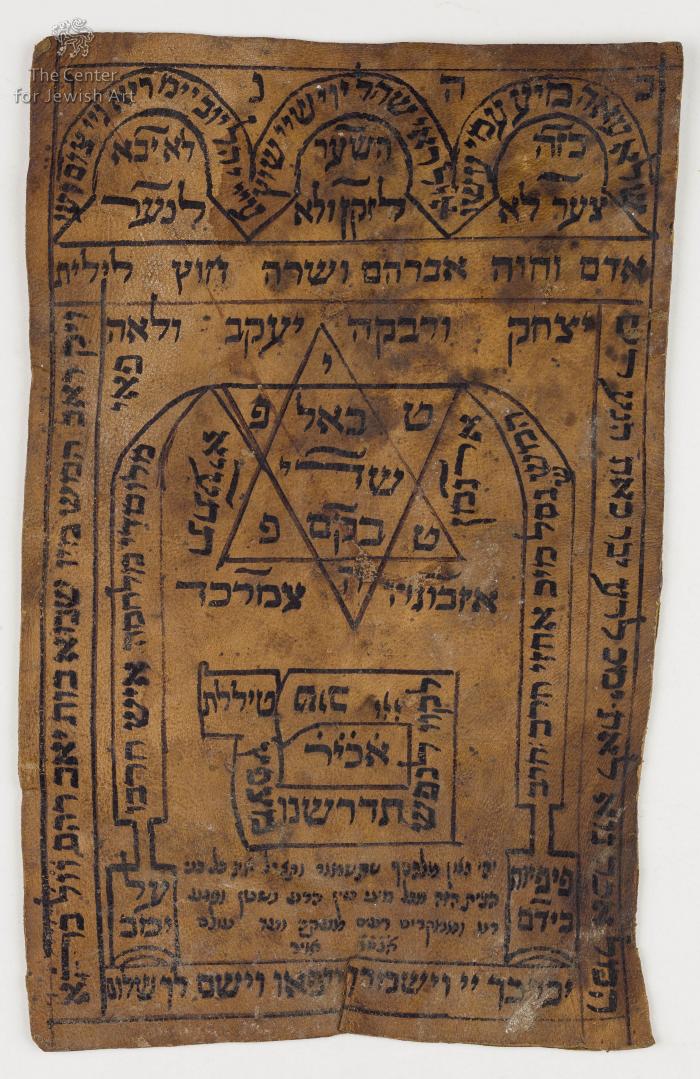Obj. ID: 50536 Amulet, Kurdistan, circa 1900

sub-set tree:
The following description was prepared by William Gross:
From earliest times, man has tried to protect himself from misfortune by the use of objects which he considered holy or otherwise (e.g., magically) potent. Amulets and talismans are items generally worn around the neck or wrist, carried in a pocket or purse or hung on a wall. They are meant to protect or aid those who carried or wore them. The Hebrew word for amulet, kame‘a, has the root meaning "to bind". Jewish amulets are usually comprised of texts (either letters or graphic symbols) that are inscribed on some sort of material; some may also contain plant matter or precious stones. The texts of amulets usually include holy names that are believed to have the ability to affect reality, along with incantations summoning angels or other magical powers. For the most part, an amulet has a specific purpose: to ease childbirth, facilitate recovery from illness, improve one’s livelihood, and so on, but in the modern world many are also made for general protection.
This is a leather, or gvil, birth amulet for the protection of mother and child, containing illustrations of the knives used to chase away Lilith. Both this depiction and the material indicate a stylistic origin in Iraq, probably in Kurdistan. The space is filled with amuletic devices for protection against the evil spirits and dangers of birth. Such devices include a Magen David, the Patriarchs, and Matriarchs, two swords, the "Yehi Ratzon" and various Kabbalistic "names". There is another leather amulet by the same hand in the Gross Family Collection, 027.010.006. Leather amulets are quite rare, the normal materials being paper or parchment.


